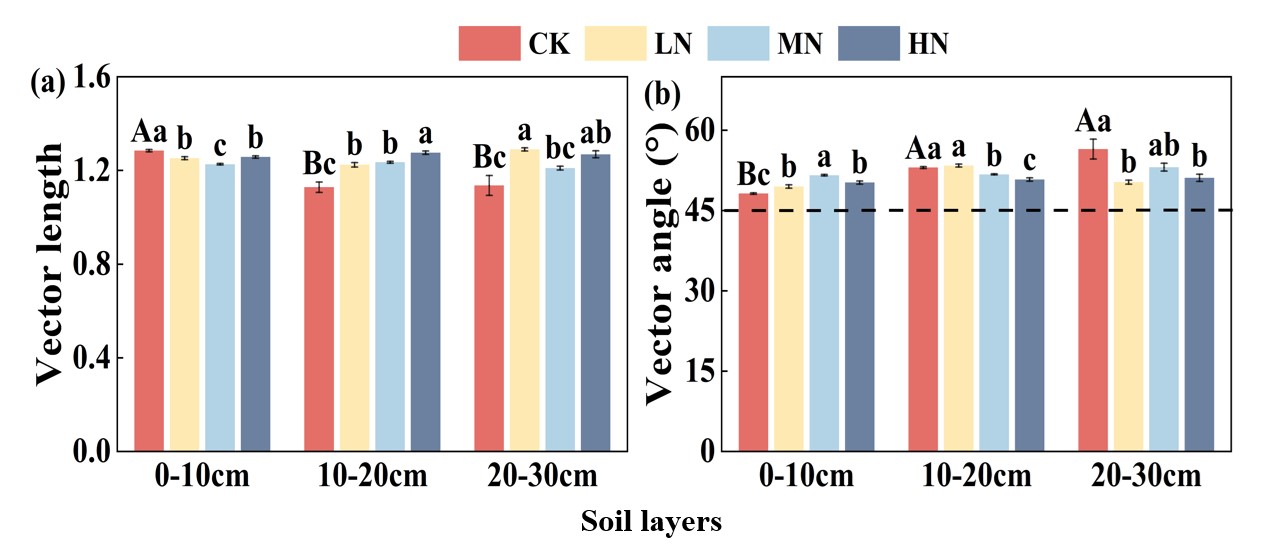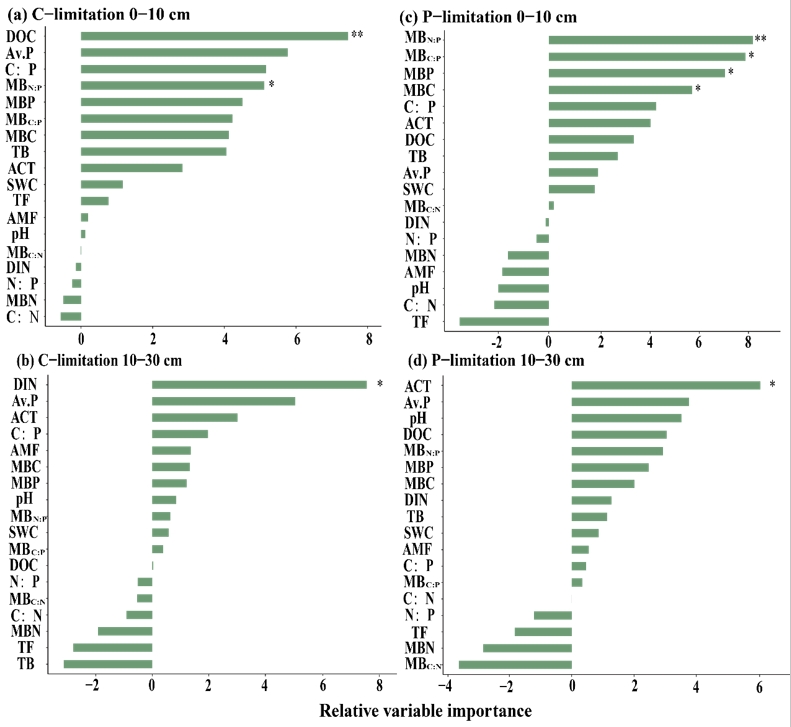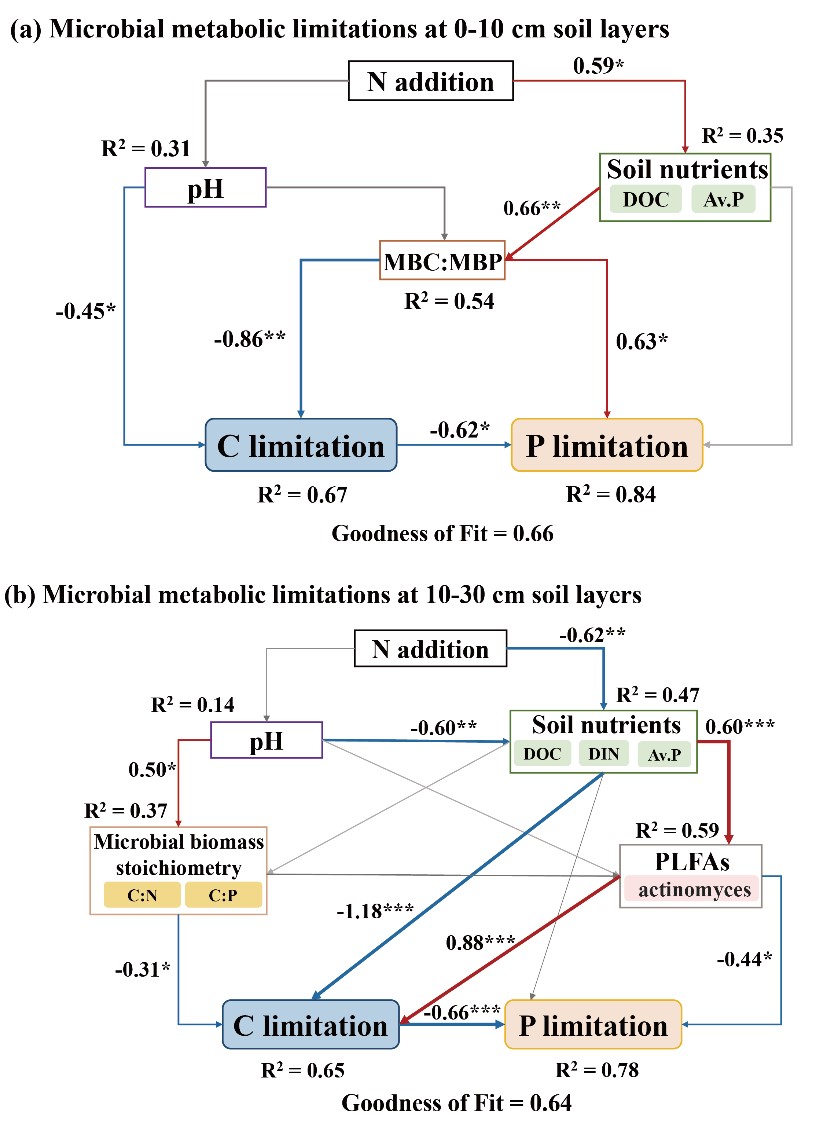Soil microbial metabolic limitations were depth-dependent under chronic nitrogen deposition in primary tropical forests
Soil microorganisms play an important role in soil biogeochemical cycles and ecosystem stability. Elevated atmospheric N deposition has greatly accelerated terrestrial N cycling processes and altered elemental stoichiometry of substrates, leading to changes in soil microbial metabolic limitation. The traditional view holds that tropical forests are sensitive to additional N inputs, and high N deposition can further exacerbate ecosystem P limitation, because of their N-rich but P-poor characteristics. However, it remains unclear how long-term N input influences microbial metabolic limitations at different soil depths in highly weathered tropical forests.
Based on a two-decade N addition experiment in an N-rich primary tropical forest, Professor Xiankai Lu and his group, from South China Botanical Garden, found that long-term high N deposition can lead to the vertical differentiation in soil microbial metabolic limitations. Specifically, long-term N deposition enhanced phosphorus (P) limitation but alleviated carbon (C) limitation at the surface soil, while the deeper soil layers exhibited opposite response patterns. They further found that soil microorganisms can acclimate to P limitation through downregulating microbial community abundance, where the relative abundance of actinomycetes could indicate P limitation status. Meanwhile, chronic N addition alleviated microbial C limitation through increasing soil dissolved organic C (DOC) contents at surface soil layers but intensified microbial C limitation at deeper soils.
This study firstly verified that long-term N deposition can exert depth-dependent selectivity on soil microbial metabolic limitations in tropical forests, which challenged the traditional view on “N deposition universally exacerbates P limitation.” In light of the depth differentiation in microbial C and P metabolisms, the authors emphasized to consider depth-dependent microbial metabolic limitations while developing earth ecosystem models, especially for the prediction on ecosystem C sink. These findings provide a key scientific basis for predicting ecosystem functional changes of tropical and subtropical forests with the globalization of nitrogen deposition.
This study was published at Global Change Biology, a leading journal in the field of global changes, with the title of “Divergent microbial metabolic limitations across soil depths after two decades of high nitrogen inputs in a primary tropical forest”. Chaolong Pang, a Master's student at South China Botanical Garden, Chinese Academy of Sciences, is the first author, with ZHANG Zehe(also a Master's student) as the co-first author. Prof. LU Xiankai is the corresponding author. The study was supported by the Key-Area Research and Development Program of Guangdong Province, the National Natural Science Foundation of China, and the Guangdong Science and Technology Program. Paper link: https://doi.org/10.1111/gcb.70440

Figure 1. Effects of long-term nitrogen addition on characteristics of microbial metabolic carbon limitation (a, Vector length) and phosphorus limitation (b, Vector angle) in different soil layers. (image by LU et al)

Figure 2. The relative importance of environmental factors at different soil layers on microbial metabolic carbon and phosphorus limitations. (image by LU et al)

Figure 3. Primary pathways of nitrogen addition effects on microbial metabolic limitations at surface and deeper soil layers.
File Download: